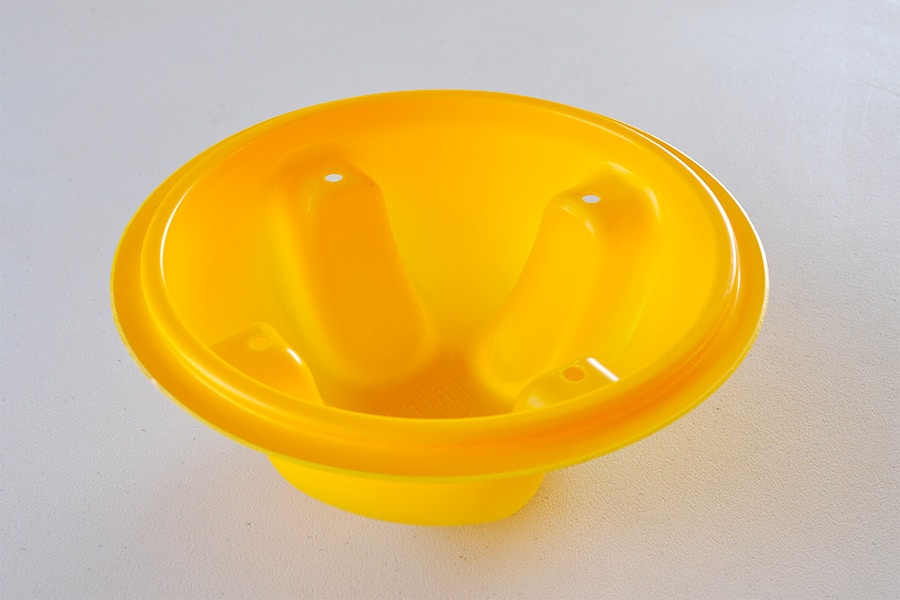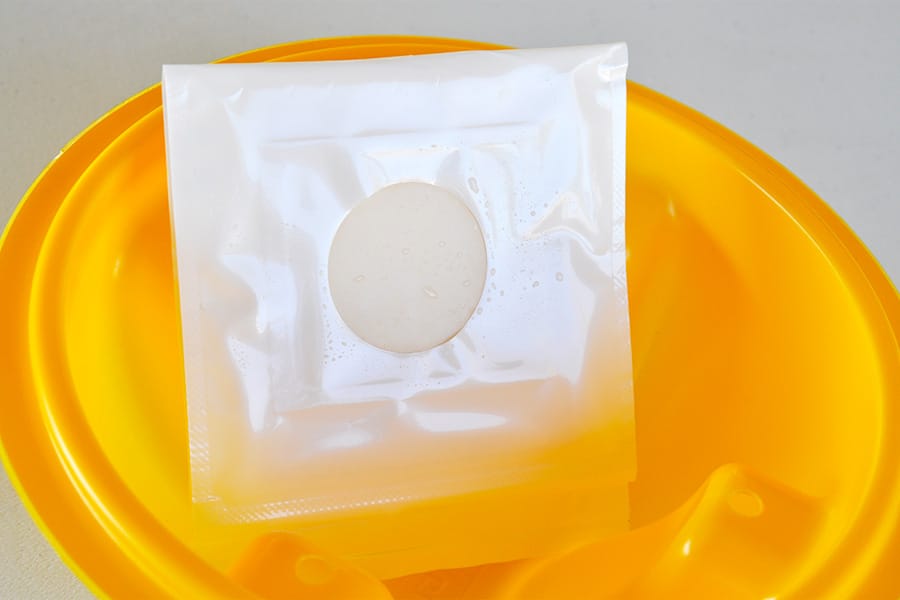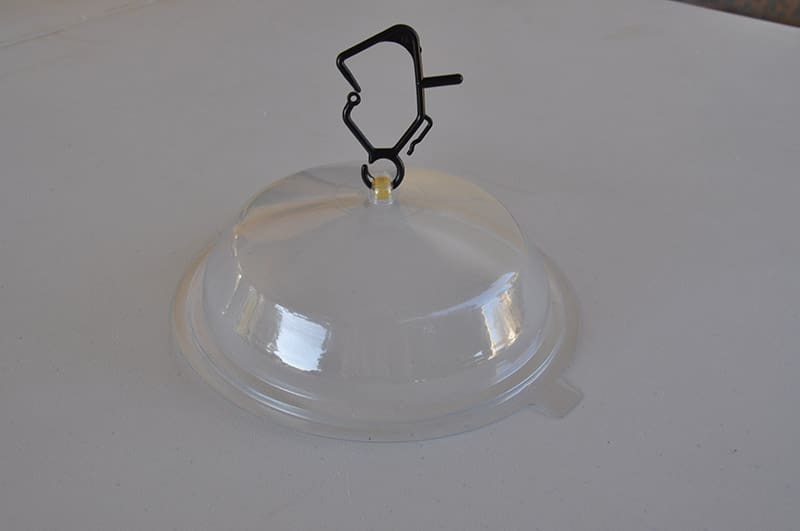Luretect | the effective solution for capturing the Mediterranean fruit fly
- Lasts up to 180 Days and more
- Selective luring for the Mediterranean fruit fly females
- Extremely easy to move and deploy – short set up time
- Low number of devices per 1 Dunam (1/4 Acre) – 5-7.5 devices
- Absolutely no poison
- Effective evaporation over time
- Dry device – no need to fill with liquid
- Israeli development
The Mediterranean fruit fly –
a brief explanation
The Mediterranean fruit fly – Ceratitis Capitata (Wiedemann), or Med Fly in short, is a major pest in Israel and throughout the world, attacking over 250 types of fruits and vegetables. The female lays its eggs inside the fruit, in a moist environment containing sugar. There the eggs will hatch and after 3 days become larvae. Each egg laying can contain up to 10 eggs, and there are multiple layings in a day. After 5 days, the larvae are ready to become pupae (the third stage of the metamorphosis), and they bounce and burrow into the ground. After 9 days the mature flies emerge, and they have a life span of several weeks up to several months. The pesticide actions target the mature population, which is only 5% of the stages of the fly.
As a result of the egg laying and eating of the outer fruit tissue by the larvae, various fungi penetrate the fruit and other flies lay their eggs (the fermentation fly – Drosophila for example). Thus, the fruit becomes rotten and cannot be marketed and sold. In the United States, Europe and some countries in Asia, this pest is considered a quarantine pest and just one fly (egg, larva or mature fly) in a shipment can lead to exterminating the entire crop and cancelling future shipments from the packing house, the region and even the entire country. In the past, the solution was to spray Malathion in combination with protein bait in the air, while supporting with organic phosphates in the ground.
Since many of the materials are now prohibited, the main solution for bait-based spray is done by using “Success” and other covering sprays made of different chemical preparations. The last decade has seen a gradual rise in the usage of anti-Mediterranean fruit fly traps. The capturing devices, which are considered environmentally friendly and prevent routine spraying that can be harmful to humans, natural enemies and the environment, are hung upon trees for the duration of the growing season and thus reduce the population of the flies – bringing the damage level below the minimal threshold. In addition, using the traps enables distinction in tolerance levels between different crops, types and regions.
In Israel, unlike the northern colder lands, winter is not cold enough in most areas to stop the life cycle of the fly, so it moves from crop to crop – feeding on the ripe fruits of that season. Because of that, come spring the fly population is already large. On top of that, in Israel it is common for many crops to be tightly packed in smaller areas – sometimes citrus plantations can be adjacent to deciduous crops – thus increasing the feeding and egg laying options for the flies.
Using traps requires implementing the traps early on, as the method for exterminating the pest is by decreasing its population – and not killing the entire population at once. In addition, it is crucial to monitor the pest by using monitoring traps, checking defects in the fruits and maintain awareness to any growth in population because of the weather, fruit ripeness, the level of maintenance done by the neighboring growers and more.
Using Luretect allows to monitor any spot in the field through the traps themselves and enables the distinction between flies who were captured in the last two days and those who were captured before. For further instructions, please see the product label.
Luretect Trap is suitable for use in all types of orchards whose fruits are susceptible to the Mediterranean fruit fly: apples, pears, peaches, nectarines, plums, apricots, cherries, vines (edible grapes), pomegranates, persimmons, mangos, citrus fruits, figs, avocados and more.

חלק צהוב תחתון

נדיפית משיכה

